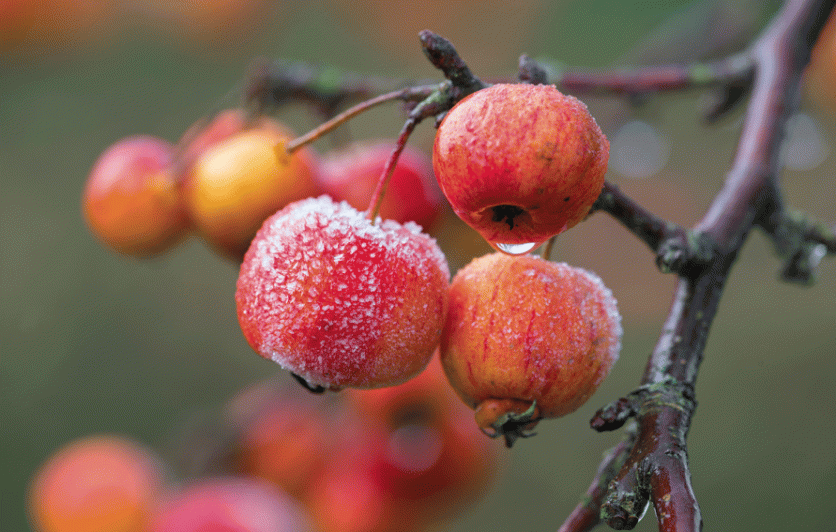The Unexpected Harvest: Why Crab Apples Are My New Everything

The crab apple is the only apple native to North America. Here, writer Becca Miller sings its praises and explains why it is the star player in her favorite seasonal fruit syrup.
Full disclosure—I am, at heart, a cool-weather girl. While there is certainly a lot to love about the warmer months, both in the world of hyper-seasonal food (garlic scapes, I adore thee) and outdoor adventures (night swimming in lakes is, obviously, unmatched in its greatness), the fact is that when the temperatures rise above the mid-60s, I can be often found huddled in shady spots, strategizing the best way to avoid short-sleeved shirts for the foreseeable future. For as long as I can remember, brisk and brilliant autumn has been my favorite time of year. Cardamom. Pumpkins. The smell of roasting root vegetables. Cradling an oversize mug of hot apple cider, content in the knowledge that the word “cozy” would be working its way back into regular rotation.
So years back, when I dove headfirst into farming, foraging and all things homesteady, that already beloved window between late-September and early-December gained even more esteem. The abundance of wild and cultivated foods available in fall is staggering, and high among my list of favorite finds is that gem of the Northeast, the crab apple. Because, nothing against the plain-old apple (you’re great, honestly), but for those of us who love unexpected seasonal bounties, discovering the many uses of this often overlooked fruit is a total game-changer.
The only apple native to North America, the crab apple is often considered purely ornamental, if we think of them at all. Just another pretty tree with inedible fruit that serves as a great pollinator. Indeed, standing in a grove of crab apple trees in the springtime when their pink buds explode suddenly into bloom is a humming, buzzing symphony—the air vibrating with the gathering of nectar and pollen as bees put away stores for the long winter ahead.
Bees are onto something with their affinity for the crab apple. Once the arrival of fall brings cooler days, the trees become absolutely laden with small red fruit. And while it’s true that the acid in raw crab apples may leave you with an upset stomach if too many are eaten at once, cooked crab apples have become a key ingredient in some of my favorite recipes. Crab apple cake. Crab apple jelly on warm biscuits. Mixed apple and crab apple cider. But far and away, my favorite use of these super-sour, cherry-size fruits is to cook them down into a syrup that is both beautiful and versatile. Like most fruit syrup recipes, this one is exceedingly simple to make and is the perfect complement to two of the undisputed best treats around: booze and breakfast foods.
Mix one part of the bright-red syrup, one part vodka or gin, two parts seltzer and a squeeze of lemon to make a sweet, tart, beautifully pink drink. For a more kid-appropriate option, make your own crab apple soda by mixing the syrup directly with seltzer to your desired sweetness, or, as we do in my house, follow a recipe for homemade soda using water, yeast and syrup.
Drizzle the syrup over waffles or pancakes, or use as an ingredient in glazes for a savory meal like pork. Jars of this brilliant-red syrup also make great gifts around Thanksgiving and the winter holidays.
If you harvest more crab apples than you’d like to process right away, simply freeze them whole for use at a later date. I’m a big fan of this strategy, since I have more time to process, cook, eat and drink during the long North Country winter than during busy autumn harvest season.



